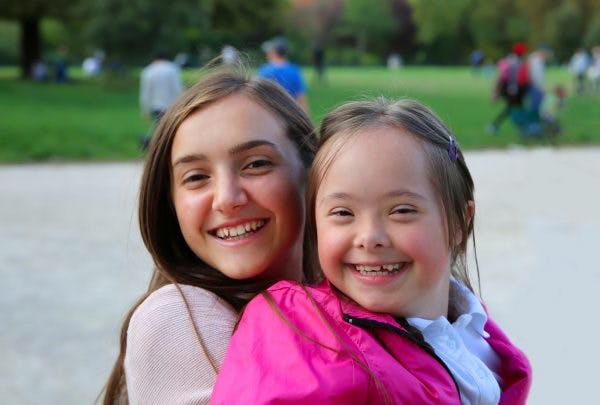Living with cerebral palsy presents unique challenges for both the individual and caregivers.
As a result, it’s essential to be aware of the potential complications of cerebral palsy in order to detect symptoms and begin management as early as possible. Early detection and management can help prevent complications from worsening, allowing individuals with CP to enhance their mobility, communication, and overall quality of life.
In this article, we will guide you through various complications individuals with CP might experience as well as several effective strategies for managing the condition. By the end, you will be better equipped to care for your loved one as well as able to take proactive steps to manage symptoms and prevent further progression.
Common Complications of Cerebral Palsy
Individuals with cerebral palsy are susceptible to a wide range of complications. Some are directly related to cerebral palsy, while others are unrelated but commonly occur as a result of extensive damage to the brain.
Below are 9 frequently occurring complications among individuals with cerebral palsy.
1. Difficulty Controlling Movements
The most common complication of cerebral palsy is difficulty controlling one’s movements due to abnormal muscle tone.
Generally, abnormal muscle tone presents itself in the form of an irregular gait or stiff movements. Depending on what type of cerebral palsy someone has, they can experience high muscle tone, low muscle tone, or a combination of both.
If not properly managed, involuntary muscle contractions or relaxations can worsen and severely impair movement.
2. Limited or Uneven Growth
Another major complication of cerebral palsy is limited or uneven growth. Cerebral palsy is caused by damage to the developing brain; therefore, people are either born with it or develop it at a very young age.
As a result, cerebral palsy can significantly affect a child’s growth and development. Children grow rapidly, and high muscle tone can pull the limbs or trunk into uncomfortable positions, which may cause uneven growth.
For example, high muscle tone in the trunk may cause children to consistently lean to one side. Because of the way the body is contorted during growth, children may develop scoliosis (a sideways curvature of the spine) resulting in poor posture.
3. Difficulties Performing Tasks that Require Dexterity

Ataxic cerebral palsy is a rare type of CP that is caused by damage to a part of the brain called the cerebellum. Some of the major functions of the cerebellum are to direct movements and establish coordination.
As a result, those with ataxic cerebral palsy often struggle with tasks that require fine motor skills such as writing, using silverware, and picking up items.
Those with other types of cerebral palsy may also struggle with hand functions due to high muscle tone. Generally, this is experienced in the form of clenched fingers.
4. Poor Nutrition
Cerebral palsy can also affect the muscles around the mouth. Oral motor impairments may make it challenging for individuals to chew and swallow their food.
Similarly, gastroesophageal reflux disorder (GERD) is relatively common among people with cerebral palsy. GERD is a condition that occurs when stomach acid travels up the esophagus. It may cause the esophagus to narrow as well as make it difficult for food to pass into the stomach.
As a result, individuals with oral motor impairments or GERD may not receive adequate nutrition and be susceptible to malnourishment.
5. Impaired Communication
Another complication of oral motor impairment is poor communication. Although someone with cerebral palsy might know exactly what they want to say, they may struggle to coordinate the muscles necessary to speak. Severe oral motor impairments may result in non-verbal cerebral palsy.
Often, individuals who are non-verbal learn how to communicate with sign language. However, individuals with cerebral palsy may also struggle with sign language because of poor fine motor skills.
6. Bowel and Bladder-Related Accidents
Due to poor bowel and bladder muscle control (incontinence), individuals with cerebral palsy may be prone to waste-related accidents. When the bowel or bladder muscles don’t contract, they retain waste, which can cause urinary tract infections or constipation.
Similarly, when there is high muscle tone in the detrusor (the muscle that makes up the wall of the bladder), the bladder can only hold a small amount of urine and leakage occurs.
7. Disrupted Sleep

Up to 46% of children with cerebral palsy experience sleep complications such as teeth grinding, breathing difficulties, and waking up throughout the night. Sleeping complications are often the result of discomfort or pain caused by high muscle tone, lack of consciousness, or gastrointestinal difficulties.
8. Delayed Responsiveness
Although cerebral palsy is a movement disability, many individuals with CP also have cognitive impairments. Generally, hearing or vision impairments aren’t a result of damage to the ears or eyes, but rather the brain’s ability to process auditory and visual stimuli. As a result, individuals may have delayed reactions or may require more time to complete tasks.
9. Higher Levels of Fatigue
Fatigue is more common among individuals with cerebral palsy due to high muscle tone which strains the muscles, bones, and joints. As a result, the body has to exert more energy to move, which may cause individuals with cerebral palsy to fatigue quickly.
Effective Ways to Manage Complications of Cerebral Palsy

While the brain damage that causes cerebral palsy may not progress over time, unmanaged complications can. Therefore, it is ideal to be aware of early signs of CP and seek management as soon as possible.
Some of the most effective ways to manage complications of cerebral palsy include:
- Physical therapy focuses on improving mobility through exercises designed to stretch tight muscles, strengthen underused muscles, maintain full range of motion, and reduce the excitability of spastic muscles.
- Occupational therapy also focuses on improving mobility by practicing activities of daily living and learning how to use adaptive tools. This develops fine motor skills and promotes a more independent lifestyle.
- Speech therapy helps develop the oral muscles necessary for speaking, chewing, and swallowing. Individuals with more severe oral motor impairments learn how to use alternative forms of communication such as voice generators, communication boards, or sign language.
- Orthotic devices such as braces, splints, and casts promote musculoskeletal alignment. Moreover, they resist the tightening of spastic muscles, which may lengthen muscles even when individuals are not actively stretching.
- Medications may temporarily relieve complications of cerebral palsy including pain, high muscle tone, and sleep problems.
- Consistent stretching lengthens tight muscles, improves range of motion, and reduces pain associated with high muscle tone.
- Cognitive exercises improve the brain’s ability to process sensory information through consistent stimulation.
- Surgery is generally recommended for severe complications that do not respond to other forms of management. They may involve selectively severing nerves or manually lengthening tendons to reduce muscle tone.
Understanding Complications of Cerebral Palsy
Cerebral palsy is a motor disorder that primarily affects one’s movements. However, difficulties controlling one’s movements may also affect major body functions such as circulation, digestion, and respiration.
Because everyone experiences cerebral palsy differently, management should be tailored to each individual’s unique complications. Hopefully, this article helped you understand the various complications of cerebral palsy and how to manage them. Good luck!











